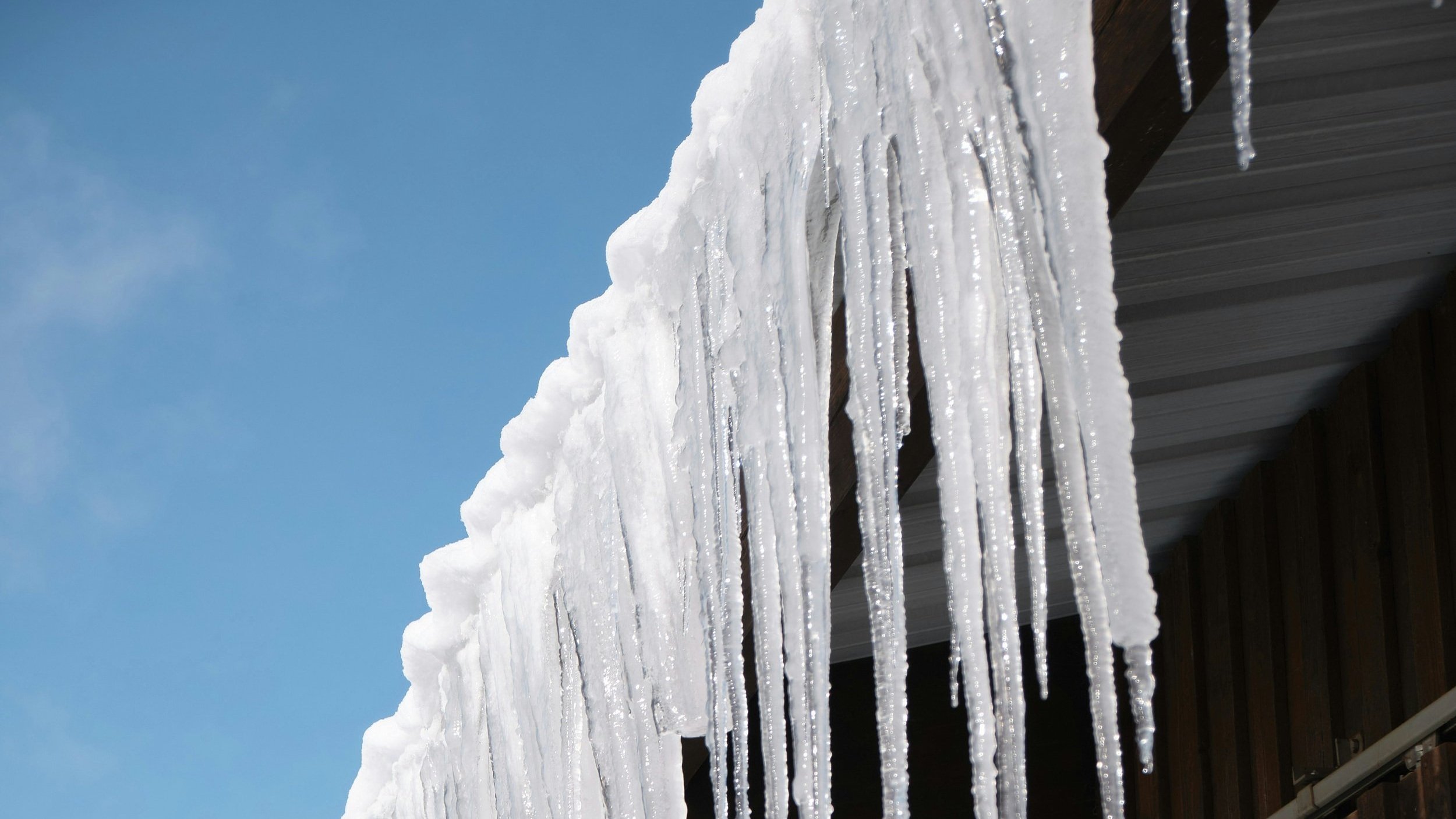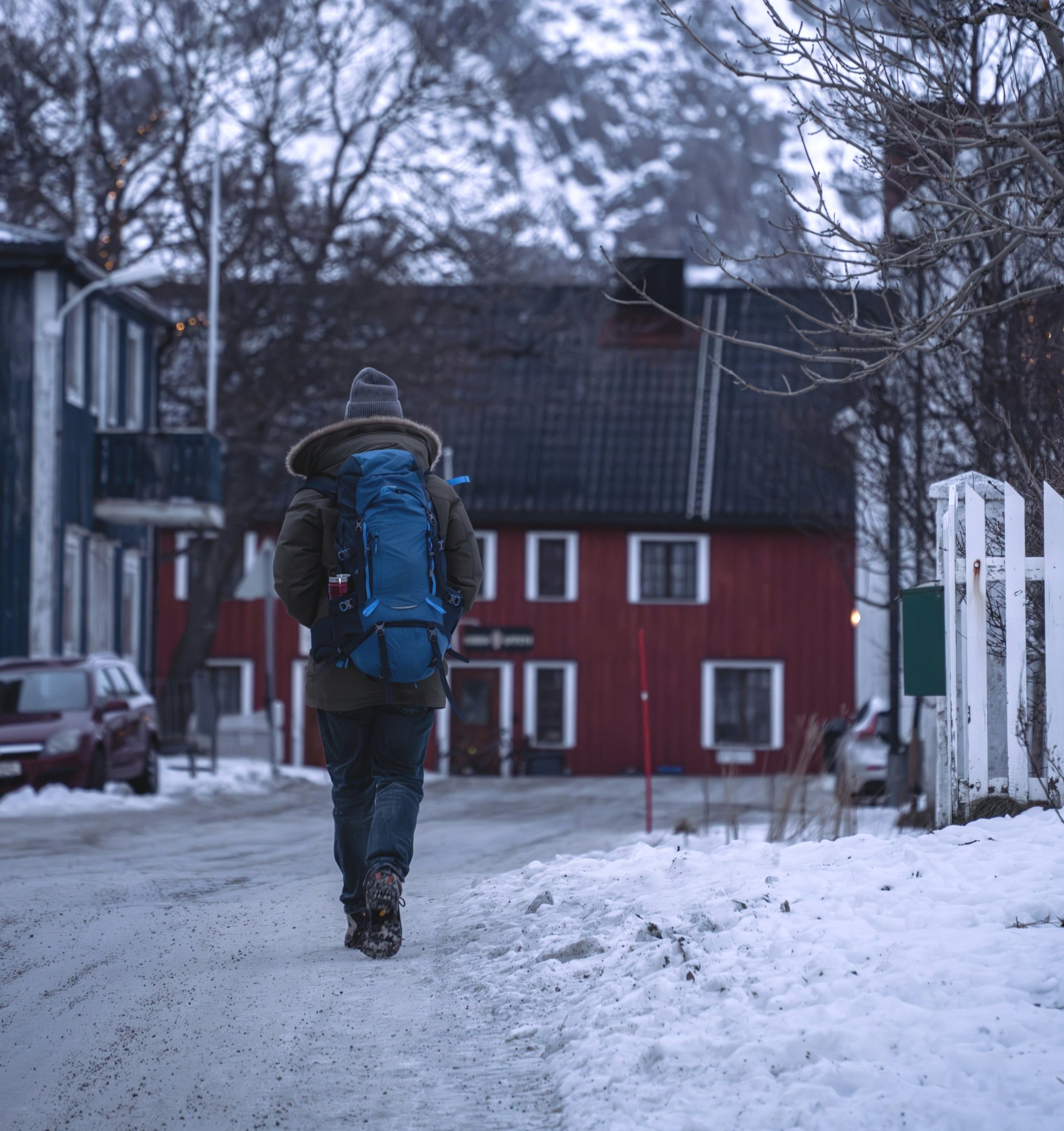Preparing Your Home for the Chilly Seasons: Essential Winterization List
Note: This article may contain affiliate links
As the summer sunshine starts to fade and the crisp air of fall begins to settle in, it's time to shift our focus from outdoor lounging to prepping our homes for the colder months. Whether you're in Kamloops, where winter can bring snow and freezing temps, or Vancouver, where the chill is a bit milder but rain is…nonstop, the transition from summer to fall/winter requires some important adjustments both inside and outside your home.
Here’s a guide on what you should focus on to keep your home cozy, efficient, and safe as the seasons change.
1. Blow Out Irrigation Systems
If you have an underground sprinkler system, you know the importance of prepping it for winter. In Kamloops especially, the temperatures can drop to the point where water left in pipes can freeze and expand, causing them to crack or burst. Before the first freeze, hire a professional or rent an air compressor to blow out the water from the pipes. It's a small job that can save you a huge headache (and expense) come springtime. Once it’s done, your irrigation system will be safe until it’s time to water those summer plants again.
2. Turn Off and Drain Outdoor Water Taps
Similar to your irrigation system, outdoor water taps need attention as well. Leaving water in outdoor pipes through the winter can result in burst pipes when temperatures drop. Shut off the water supply to the outdoor taps and drain any water left in the lines. For added protection, consider installing insulated covers on your outdoor faucets.
3. Inspect and Seal Windows, Doors, and Cracks
Drafts can sneak into your home and raise your heating bills, and who wants that? As temperatures drop, go around your home and check all windows and doors for drafts. Sealing gaps around windows and doors with weather stripping or caulking can make a huge difference.
Also, check for cracks or holes in your garage, foundation, or exterior walls. Not only do these let cold air in, but they also provide easy entry points for pests looking to escape the cold. You don't want to be sharing your warm home with spiders, mice, or other unwanted guests this winter.
4. Spider and Pest Control
Speaking of pests, fall is the time when creepy crawlies start to look for a warm place to settle in. In both Kamloops and Vancouver, spiders can become more noticeable as they seek out warmer areas. Taking some preventative measures can keep them, along with other pests, at bay.
Keep your garage and basement floors clutter-free to reduce hiding spots for pests. If you’ve noticed cracks or openings in your home, seal them up now. It’s also a good time to put out deterrents like peppermint oil for spiders, rodent traps in areas where you’ve had issues before, or these sticky insect traps.
5. Check and Clean Gutters
Gutters are your home’s first line of defense against water damage, and when the fall leaves start to drop, they can quickly become clogged. If your gutters are full, water can back up and damage your roof, siding, or even your foundation.
Once most of the leaves have fallen, clear out the gutters and downspouts. If you're not comfortable doing this yourself, many companies offer gutter cleaning services. Consider installing gutter guards to keep debris out and reduce the frequency of cleaning in the future.
6. Furnace Maintenance and Air Filter Replacement
As we shift from cooling to heating, it's a good time to get your furnace inspected. This helps ensure it’s running efficiently and safely. A quick tune-up can prevent unexpected breakdowns in the dead of winter, when heating is obviously essential and when service providers get bogged down with urgent phone calls.
Don't forget to replace or clean the furnace filter regularly, meaning every 1-3 months. A clean filter helps your furnace work more efficiently, keeping your home warm and saving on energy costs. A good tip is order multipack of the correct size filters for your furnace and set a monthly alarm in your phone to check and replace if necessary.
7. Chimney and Fireplace Check
Nothing says cozy like a crackling fire in the fireplace. But before you light that first log of the season, make sure your chimney and fireplace are in good shape. Have your chimney inspected and cleaned to remove any creosote buildup, which can become a fire hazard.
If you have a gas fireplace, it’s also a good idea to have it serviced, making sure it’s in safe working order before the cold months arrive.
8. Prepare for Snow and Ice
While coastal winters are generally more about rain than snow, in the BC interior, you’re bound to see a good share of snow. Make sure you have all your winter gear ready, like snow shovels, ice melt, and car brushes. Purchase these things now to avoid the mad rush of buyers at every hardware store in town once that first snowfall hits. If you have a snowblower, get it serviced and make sure it’s in working order before.
It’s also smart to check the condition of your walkways and driveway. Fixing any cracks or uneven surfaces now can prevent ice buildup and reduce the risk of slipping during those icy winter days.
9. Get Organized for Winter Gear
Now's the time to swap out your summer gear for winter essentials. In your garage or storage space, put away the gardening tools, bikes, and outdoor furniture. Make room for winter items like snow tires, skis, or sleds.
Inside, this is also a great opportunity to organize your entryway for the influx of winter coats, boots, and scarves. Once your summer gear is tucked away, replace it with your fall and winter wardrobe. . This is also a great time to declutter any clothing you no longer wear. Consider donating any gently used items that didn’t make it out of your closet this summer.
By keeping your wardrobe organized and rotating it seasonally, you’ll save space and avoid rummaging through out-of-season items when the temperatures drop. Plus, it's the perfect opportunity to refresh your closet and get ready for the colder months ahead. Having designated spots for all your winter gear will help keep your home clutter-free and easy to navigate as the seasons change.
10. Test Smoke and Carbon Monoxide Detectors
As you start using your furnace or fireplace, it’s more important than ever to ensure your smoke and carbon monoxide detectors are working properly. Test all detectors in your home and replace the batteries if needed. It's a small task that can make a big difference in keeping your family safe.
11. Inspect and Reverse Ceiling Fans
Many people forget that ceiling fans can actually help regulate your home’s temperature in the winter too. Switch your ceiling fans to rotate in a clockwise direction (most fans have a small switch on the base). This helps push warm air down from the ceiling, which can make your home feel warmer and reduce heating costs. It’s a small but effective way to improve heat circulation, especially in homes with high ceilings.
12. Clean and Store Your Lawn Equipment
Before storing your lawnmower and other summer yard tools for the winter, give them a good cleaning. For gas-powered equipment, drain the fuel to prevent it from going bad over the winter months. You may also want to sharpen mower blades and hedge trimmers now, so they’re ready to go when spring rolls around. Taking these steps will extend the life of your equipment and ensure it’s ready when you need it again.
13. Stock Up on Emergency Supplies
Winter weather in BC can be unpredictable, and power outages are not uncommon during windstorms or heavy snow. Now is the perfect time to check and restock your emergency supplies. If you have a wood stove or fireplace, stock up on firewood. In Kamloops, where winter can bring heavy snow, it’s also smart to have some non-perishable food items on hand in case you’re snowed in.
14. Test and Insulate Hot Water Tank
Your hot water tank works harder in the winter, and sometimes it's overlooked until there's a problem. It’s a good idea to inspect your hot water tank for any signs of wear or leaks. If you want to take an extra step, consider adding an insulating blanket specifically made for water heaters, which can help reduce heat loss and improve efficiency during the colder months.
15. Protect Outdoor Plants and Trees
Wrap any sensitive shrubs or trees in burlap or frost cloth to shield them from freezing temperatures and drying winds. Mulch around the base of plants to help insulate the roots. If you have potted plants, consider moving them inside or into a sheltered area to prevent frost damage.
16. Inspect Outdoor Lighting and Replace Bulbs
As the days get shorter, outdoor lighting becomes more important. Walk around your property and check all exterior lights, especially around entrances, walkways, and driveways. Replace any burnt-out bulbs with energy-efficient LED bulbs or invest in motion-sensor lights for added security during the darker months.
17. Clean Dryer Vents
While lint traps are usually cleaned after every load, the vent that runs from your dryer to the outside can get clogged with lint over time. A clogged dryer vent is not only a fire hazard but also causes your dryer to work harder, increasing energy use.
How Long Should This Take?
Exterior Tasks:
Blow out irrigation system – 1-2 hours (professional or DIY with equipment)
Turn off and drain outdoor water taps – 15-30 minutes
Seal windows, doors, and cracks – 1-2 hours (depends on the number of areas)
Spider and pest control – 1 hour (set traps, seal cracks, apply deterrents)
Clean gutters – 1-2 hours (longer if hiring help or installing gutter guards)
Inspect and clean chimney/fireplace – 1-2 hours (professional inspection/cleaning may take longer)
Check outdoor lighting and replace bulbs – 30 minutes
Prepare snow and ice gear – 15-30 minutes
Protect outdoor plants and trees – 1 hour
Store lawn equipment – 30-60 minutes
Interior Tasks:
Furnace tune-up and air filter replacement – 30 minutes (longer if hiring a professional)
Seasonal clothing swap – 1-2 hours (depends on the amount of clothing)
Test smoke and carbon monoxide detectors – 10-15 minutes
Reverse ceiling fans – 10-15 minutes
Clean dryer vents – 30 minutes
Stock up on emergency supplies – 30 minutes
Insulate hot water tank – 1 hour
Estimated Time for Winterization Process:
Exterior tasks: 8-10 hours
Interior tasks: 4-6 hours
Total time: 12-16 hours
Homer’s Winterization
So, overall not a huge amount of time, you can likely complete a lot of these tasks over a weekend, especially if you’re able to hire out some of the more skillful tasks.
Staying on top of these tasks is part of homeownership and will prevent bigger problems down the road, ensuring your home stays is great condition. 🍂❄️
Centered Space specializes in Home Curation Services…Essentially anything that boosts your home’s functionality, aesthetic, and appeal!
Check out our Home Organization services for more details.🌵🏠










